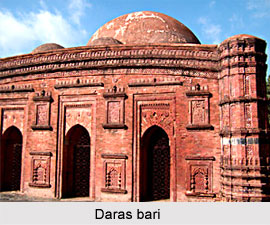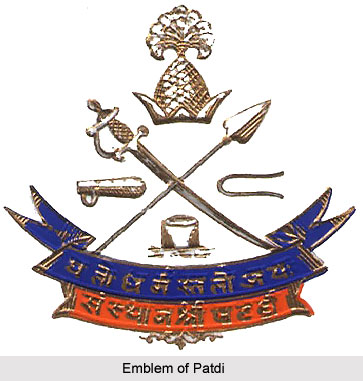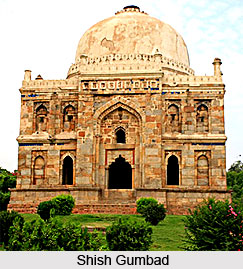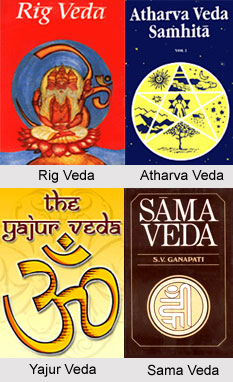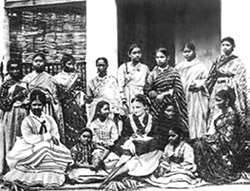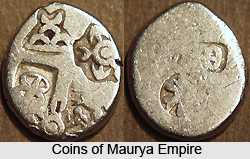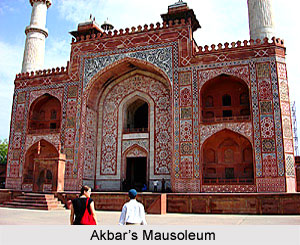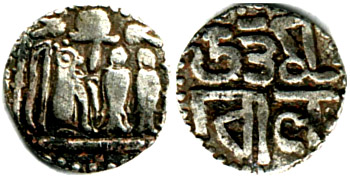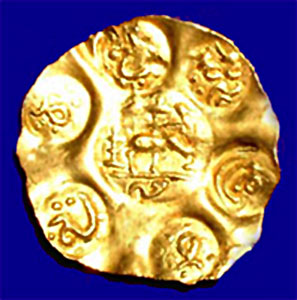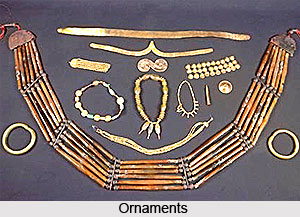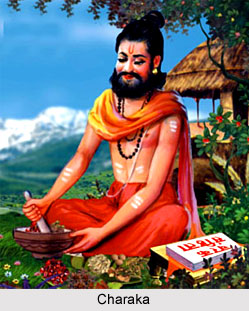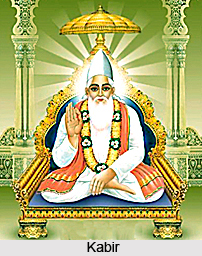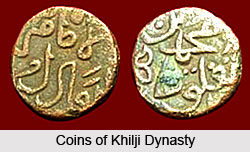 The 24th Regiment of Madras Native Infantry was an infantry battalion under the Madras Army. The unit operated under the British East India Company until the Indian Rebellion of 1857 and existed from the year 1903 to 1922. The army of Madras Presidency was established with the objective of defending the commercial interests of the Honourable English East India Company. It was one of the 3 major Presidency Armies in British India. After the Sepoy Mutiny of 1857, the British Presidency Armies were merged to form the British Indian Army in 1903. The 24th Regiment of Madras Native Infantry was also included as a part of the Madras Command and was designated as the 2nd Battalion 12th Regiment of Madras Native Infantry and the 84th Punjabis regiment in 1903.
The 24th Regiment of Madras Native Infantry was an infantry battalion under the Madras Army. The unit operated under the British East India Company until the Indian Rebellion of 1857 and existed from the year 1903 to 1922. The army of Madras Presidency was established with the objective of defending the commercial interests of the Honourable English East India Company. It was one of the 3 major Presidency Armies in British India. After the Sepoy Mutiny of 1857, the British Presidency Armies were merged to form the British Indian Army in 1903. The 24th Regiment of Madras Native Infantry was also included as a part of the Madras Command and was designated as the 2nd Battalion 12th Regiment of Madras Native Infantry and the 84th Punjabis regiment in 1903.
History of 24th Regiment of Madras Native Infantry
The infantry regiment was formed as the 34th Battalion of Madras Native Infantry by Captain Donald Macdonald on 12 August 1794 at Vellore. It was a part of the former Madras Army of East India Company. The 84th Punjabis was renamed as the 24th Madras Infantry in 1902 and was restructured with Rajputs, Sikhs Punjabi and Muslims. After the reforms implemented by Lord Kitchener in the British Indian Army, all the units in Madras army had 60 added to their numbers. The name of the regiment was also changed to 84th Punjabis.
Military Operations of 24th Regiment of Madras Native Infantry
The battalion greatly contributed in the British campaigns at of south India and central India. The 24th Regiment of Madras Native Infantry first took part in the Fourth Mysore War on 27 March 1799. Later the troops fought against Tipu Sultan of Mysore in the Battle of Seringapatam. The regiment also participated in the Battle of Assaye in 1803 during the Second Anglo Maratha War. The unit was then commanded by General Arthur Wellesley. The army battalion later provided service in the military expedition to Mauritius and Bourbon Island in the Indian Ocean in the year 1810. During the Third Anglo Maratha War from 1817 to 1819, the 84th Punjabis fought against the Maratha army and defeated them. Later it served in Burma.
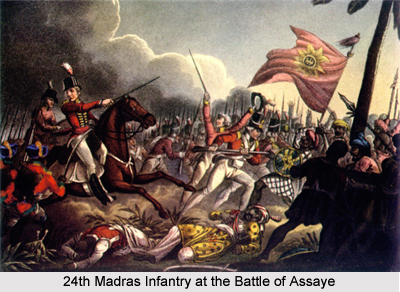 The 24th Madras Infantry was stationed at the North West Frontier of India during the First World War. Later the regiment was sent to Mesopotamia where the troops served on the Euphrates Line. It provided military service at Salonika in Greece and was posted in Turkey from 1919 to 1920.
The 24th Madras Infantry was stationed at the North West Frontier of India during the First World War. Later the regiment was sent to Mesopotamia where the troops served on the Euphrates Line. It provided military service at Salonika in Greece and was posted in Turkey from 1919 to 1920.
Development of 24th Regiment of Madras Native Infantry
After World War I ended, the 24th Regiment of Madras Native Infantry was amalgamated with the 62nd Punjabis, 66th Punjabis, 76th Punjabis and 82nd Punjabis and the 1st Brahmans regiment in order to raise the 1st Punjab Regiment in the year 1922. Subsequently, it was renamed as the 10th Battalion, 1st Punjab Regiment and was assigned as the Training Battalion of the regiment at Jhelum. The 10/1st regiment Punjab was modified into the 1st Punjab Regimental Centre during the Second World War. After the Partition of India, the military regiment was apportioned to the Pakistan Army.
Designations of 24th Regiment of Madras Native Infantry
The various designations and titles of the 24th Regiment of Madras Native, which it held through out its existence in the British Indian Army, are mentioned as follows-
* 34th Battalion of Madras Native Infantry (1794)
* 2nd Battalion 12th Regiment of Madras Native Infantry (1797)
* 24th Regiment of Madras Native Infantry (1824)
* 24th Regiment of Madras Infantry (1885)
* 24th Madras Infantry (1901)
* 84th Punjabis (1903)
* 10th (Training) Battalion 1st Punjab Regiment (1922)
* 10/1st Punjab Regimental Training Centre (1942)
* 1st Punjab Regimental Centre (1943)


